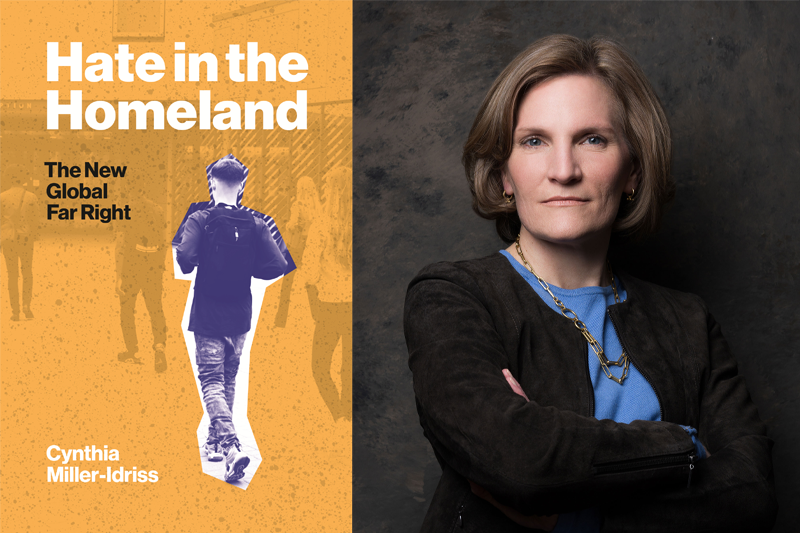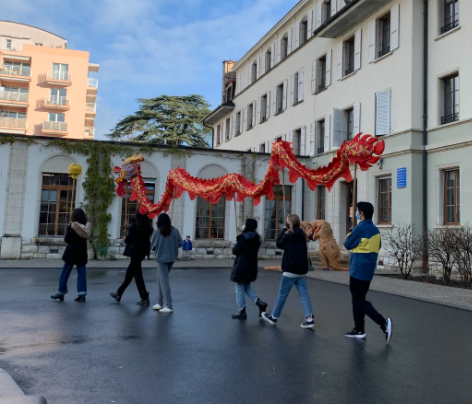By Benjamin Gorisek-Gazze, Year 12
On Monday the seventh of November, LGB welcomed a guest speaker to address the growing issue of far-right violent extremism in today’s political climate. Dr. Cynthia Miller-Idriss is an award-winning author as well as an educator and scholar of extremism and radicalization. She is the founding director of the Polarization and Extremism Research and Innovation Lab (PERIL) and a professor at the School of Public Affairs and School of Education at the American University in Washington, DC.
Dr. Miller-Idriss’s talk centered around three parts. First, she contextualized extremist movements historically, drawing attention to their slow growth in the past 30 years in the West. She then zeroed in on recent developments with a U.S. focus, analyzing extremist groups such as QAnon and the Boogaloo movement and their impacts. Finally, she addressed prevention and youth education, taking a uniquely human, systemic approach to disinformation in the mainstream media.
The Growth of Far-Right Extremism:
The far-right is a political spectrum usually characterized by radicalist exclusivism. While groups centered around these ideals are not necessarily violent, there has been a steady increase in extremist terrorism over the past ten years such as the mobilization of militias and increased violence against LBGTQ+ individuals. The U.S. Capitol “insurrection” that occurred on January sixth is the most well-known example. Generally, these groups are not responsible for a great number of deaths–although all deaths are worth preventing–they are, however, charged with the destruction of millions of dollars worth of property damage. Far-left radicalism and violence also exist, Antifa being the most notable U.S. group. However, for the past 30 years, it has been less prevalent than far-right extremism and current rises are attributed by experts as a response to far-right extremism, says Dr. Miller-Idriss. That being said, in the 1980s far-left extremism was more violent and problematic than far-right. However, this period has ended.
Overall, far-right terrorist incidents increased by 250% globally from 2014-2019. According to Dr. Miller-Idriss, mainstream media is most responsible for this. Spaces like Facebook are hotspots for the gathering and sharing of extremist disinformation, which is having an especially great effect on youth susceptible to such ideas. Additionally, with the lack of appropriate regulation, it’s rather easy to foster radicalization networks and get around the algorithm. One example Dr. Miller-Idriss gives is the Boogaloo movement. Sometimes called the “Boogaloo Boys”, this loosely organized movement often uses words like “Big Igloo” to skirt regulation. Similarly, some organized groups use special characters or in some cases the Cyrillic alphabet to bypass automatic checks. This issue only gets bigger as social media becomes increasingly mainstream and influencers such as Elon Musk, who recently bought Twitter, argue against regulation on the platforms. The accumulation of all these things leads to a cesspool of toxic and unpredictable extremist groups that draw in more people on a daily.
Prevention and Response:
Obviously, the biggest issue isn’t the formation of the groups but the violence. However, due to the unpredictable nature of these extremist groups and the polarization they spread, it is more important to strike them at their roots. Preventing an attack through careful combing and regulation is the most effective way to save lives and protect property. Dr. Miller-Idriss stated that this starts with recognizing far-right extremists as an issue. Because Western extremist groups only account for a very small portion of global terrorist deaths, governments, specifically the U.S., have not truly acknowledged the issue until recently. In the U.S. specifically, anti-terrorism was largely focused on external affairs due to the effects of 9/11. This left far-right extremist groups to grow. Dr. Miller-Idriss has testified countless times in front of governments and international entities such as the United Nations on issues of domestic violent extremism. It is becoming increasingly recognized and combatted globally.
Along with prevention, extremist disinformation must be dealt with as well. Dr. Miller-Idriss proposes a public health approach in which there is a focus on building resilient systems and individuals. This comes with pushing forward regulation and prevention in the mainstream media, and with individual education and resilience building. Dr. Miller-Idriss has been active in providing this education through her consultations, presentations–as she did at LGB– and books. She has recently released a book called Hate in the Homeland: The New Global Far Right, which has more information on extremism globally.




Very sophisticated article. I wonder if there were any questions asked by the audience! Violence is never the answer.